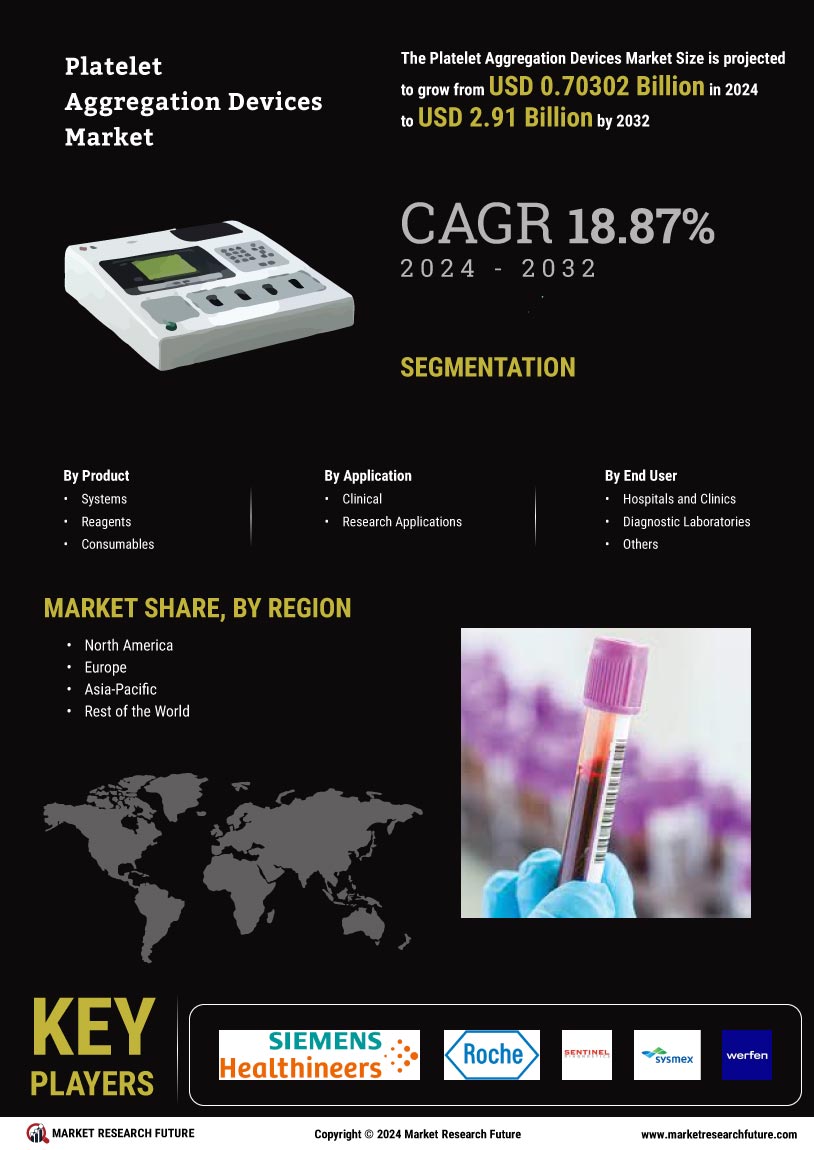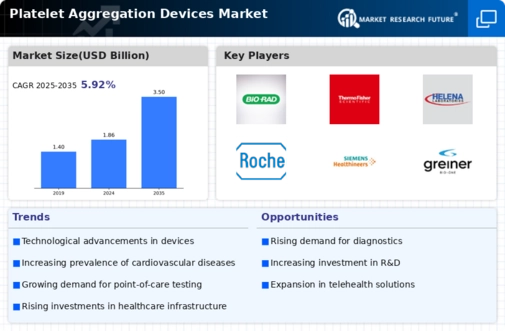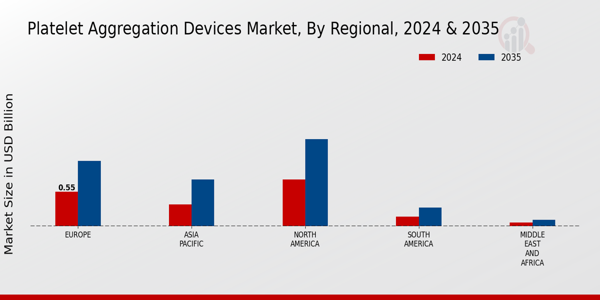Market Growth Projections
The Global Platelet Aggregation Devices Market Industry is projected to experience substantial growth over the next decade. With an estimated market value of 1.86 USD Billion in 2024, it is expected to reach approximately 3.5 USD Billion by 2035. This growth trajectory indicates a compound annual growth rate of 5.92% from 2025 to 2035. The increasing demand for advanced diagnostic tools, coupled with the rising prevalence of cardiovascular diseases and an aging population, is likely to drive this expansion. As healthcare systems worldwide adapt to these trends, the market for platelet aggregation devices is poised for significant development.
Growing Geriatric Population
The global increase in the geriatric population is another significant factor propelling the Global Platelet Aggregation Devices Market Industry. Older adults are more susceptible to various health issues, including cardiovascular diseases and clotting disorders, which necessitate regular monitoring of platelet function. According to the United Nations, the number of people aged 65 and older is expected to double by 2050, reaching approximately 1.5 billion. This demographic shift is likely to drive demand for platelet aggregation testing devices, as healthcare systems adapt to the needs of an aging population, thereby contributing to the market's anticipated growth.
Rising Awareness and Preventive Healthcare
There is an increasing awareness regarding preventive healthcare measures, which is positively impacting the Global Platelet Aggregation Devices Market Industry. Patients and healthcare professionals are recognizing the importance of early detection and management of thrombotic disorders. Educational campaigns and initiatives aimed at promoting cardiovascular health are encouraging individuals to undergo regular screenings. This heightened awareness is likely to lead to an increase in the utilization of platelet aggregation tests, thereby driving market growth. As a result, the market is projected to experience a compound annual growth rate of 5.92% from 2025 to 2035, reflecting the growing emphasis on preventive healthcare.
Rising Incidence of Cardiovascular Diseases
The increasing prevalence of cardiovascular diseases globally is a primary driver for the Global Platelet Aggregation Devices Market Industry. As cardiovascular conditions remain a leading cause of mortality, the demand for effective diagnostic and therapeutic tools is paramount. For instance, the World Health Organization reports that cardiovascular diseases account for approximately 32 percent of all global deaths. This growing health concern necessitates advanced platelet aggregation testing, which is crucial for assessing thrombotic risk and managing treatment strategies. Consequently, the market is projected to reach 1.86 USD Billion in 2024, reflecting the urgent need for innovative devices.
Regulatory Support and Reimbursement Policies
Supportive regulatory frameworks and favorable reimbursement policies are crucial drivers for the Global Platelet Aggregation Devices Market Industry. Governments and health authorities are increasingly recognizing the importance of platelet aggregation testing in managing cardiovascular diseases. This recognition often translates into improved reimbursement rates for diagnostic tests, making them more accessible to patients. For instance, various countries have implemented policies that facilitate coverage for advanced diagnostic devices. Such regulatory support not only encourages healthcare providers to adopt these technologies but also enhances patient access to necessary testing, thereby fostering market growth.
Technological Advancements in Diagnostic Devices
Technological innovations are significantly influencing the Global Platelet Aggregation Devices Market Industry. The development of sophisticated devices that offer enhanced accuracy, speed, and user-friendliness is driving market growth. For example, the introduction of automated platelet aggregation analyzers has streamlined testing processes, allowing for rapid and reliable results. These advancements not only improve patient outcomes but also facilitate better clinical decision-making. As healthcare providers increasingly adopt these technologies, the market is expected to expand, with a projected value of 3.5 USD Billion by 2035, indicating a robust growth trajectory.



















